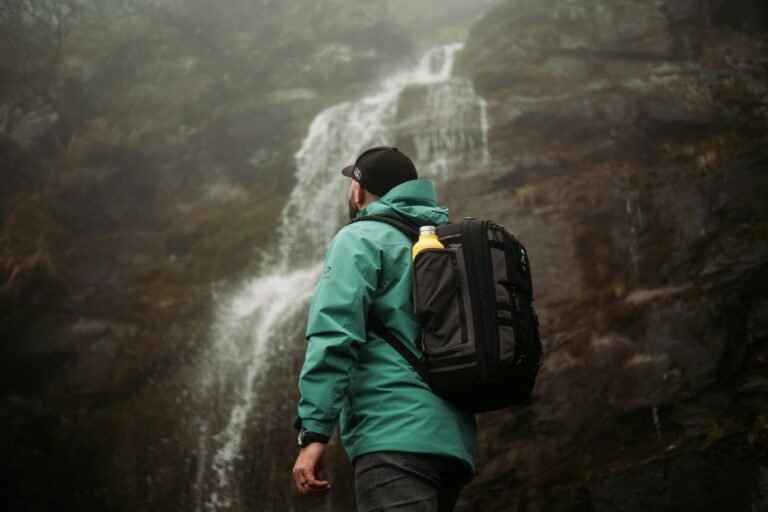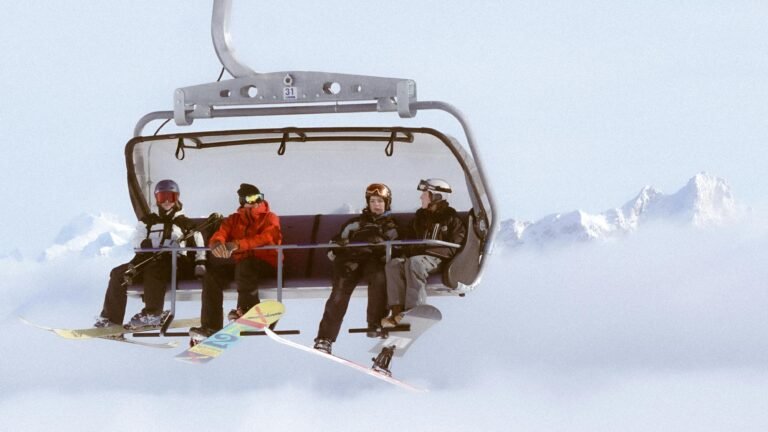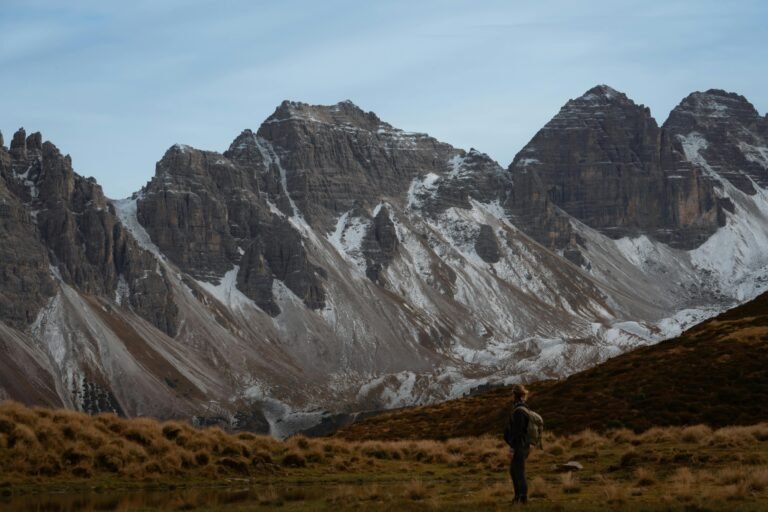Dangers of Hiking: How to Stay Safe on Any Trail

Hiking is one of the best ways to immerse yourself in nature, but it comes with its share of challenges. It’s important to be aware of the dangers of hiking to ensure a safe and enjoyable experience.
Surprisingly, more than half of hiking emergencies happen because of mistakes that could’ve been avoided.
I’ve seen it often—people caught off guard by sudden weather shifts, tough trails, or running out of water.
In this guide, I’ll break down the most common hazards and, more importantly, how to steer clear of them.
Whether you’re just starting out or a seasoned hiker, these practical tips will help you stay safe and fully enjoy the adventure.
Common Dangers of Hiking
Unpredictable Weather
Nature doesn’t care about our plans, and the weather can turn on a dime—even during a short hike.
A clear morning can shift to a stormy afternoon without warning, especially in the mountains.
If you’re unprepared, this kind of sudden change can lead to serious risks like hypothermia, frostbite, or heatstroke.
Check the Weather Forecast
Always check the forecast for your hiking day and the days around it.
Look for hourly updates, and keep an eye out for any signs of bad weather, like thunderstorms or strong winds.
Dress in Layers
Layering helps you adapt as the temperature changes.
Start with a moisture-wicking base layer, add an insulating layer like fleece, and finish with a waterproof shell. This way, you’re ready for anything.
Carry Emergency Gear
Pack a lightweight poncho, thermal blanket, and a few hand warmers.
These small items can be lifesavers if the weather takes an unexpected turn.
A little preparation can turn potential weather hazards into manageable inconveniences. For a full packing list, check out The Ultimate Day Hike Packing List to make sure you’re fully prepared.
Rough Terrain and Falls
Many trails are full of uneven ground, steep climbs, and hidden obstacles that can make hiking tricky.
Falls are one of the most common causes of hiking injuries and can range from minor scrapes to serious fractures.
Wear the Right Shoes
Hiking boots with good ankle support and a solid grip are key.
For budget-friendly options, check out The Best Affordable Hiking Boots for comfort and safety.
Test the Terrain Before Stepping
Use a trekking pole or even your foot to check for loose rocks or slippery spots ahead of you.
Slow and Steady
Don’t rush. Moving carefully through tough sections goes a long way in reducing your risk of injury.
If someone does take a fall, remember your basic first aid.
Immobilize any injured areas, and seek professional help for anything serious.
Dehydration and Heat Exhaustion
A sunny day feels amazing out on the trail, but if you’re not staying hydrated, that heat can quickly turn dangerous.
Dehydration isn’t just about feeling thirsty—it can lead to fatigue, confusion, and even heat exhaustion.
Hydration is Key
Always bring at least two liters of water per person, and more if it’s a long or intense hike.
For hands-free options, check out The Best Ways to Carry Water While Hiking.
Add Electrolytes
Water alone might not be enough on a hot day.
Pack electrolyte tablets or sports drinks to help replace salts you lose when you sweat.
Plan Around the Heat
Start your hike early in the morning or later in the afternoon to avoid the midday sun.
For longer hikes where you might run out of water, consider packing The Best Water Filters for Hiking to ensure you have access to safe drinking water wherever you are.
Wildlife Encounters
Hiking often takes you into the territory of wild animals—anything from curious deer to potentially dangerous bears, snakes, or cougars.
Most wildlife would rather avoid you, but things can escalate fast if you’re not prepared.
Avoid Attracting Animals
Keep food stored in bear-proof containers or hang it from a tree. Leave no scraps behind.
Stay Calm and Alert
If you come across wildlife, don’t panic.
Back away slowly, keeping movements steady and quiet.
Carry Protection
In bear country, bear spray is essential. Keep it handy, and make sure you know how to use it.
Learning to respect and understand wildlife behavior can help you prevent close encounters from turning into dangerous situations.
Getting Lost
Getting lost on a trail is a common concern, and for good reason.
It’s easy to lose your way if trail markers aren’t clear or if you accidentally step off the path.
Stick to the Trail
Don’t take shortcuts or venture into unmarked areas, even if they seem quicker.
Bring Navigation Tools
Carry maps, a compass, or a GPS device—and make sure you know how to use them before you head out.
For hands-free navigation, check out The Best GPS Watches for Hiking.
Mark Your Path
Leave subtle markers, like small piles of stones, especially at intersections or where the trail fades.
If you do find yourself lost, keep calm.
Use your tools to reorient yourself, and if needed, signal for help with a whistle or reflective gear.
How to Prepare for a Safe Hike

Research and Plan Your Route
The more you know about your trail, the better prepared you’ll be.
Know the Difficulty Level
Research the elevation gain, distance, and terrain type before heading out.
Websites like AllTrails or local ranger stations are great resources.
Check for Updates
Look for trail closures, weather advisories, or permit requirements before you go.
Emergency Exits
Familiarize yourself with alternative routes or nearby shelters in case of unexpected situations.
Pack the Right Gear
Your gear list can vary depending on the trail, season, and duration of your hike, but certain items should always be in your pack.
The ten essentials include:
- Navigation tools.
- Sun protection (sunscreen, sunglasses, hat).
- Extra clothing layers.
- A reliable headlamp or flashlight.
- First aid supplies.
- Fire-starting tools.
- A multi-tool or knife.
- Extra food.
- Plenty of water.
- Emergency shelter (bivy sack or space blanket).
For more information, check out The Ultimate Day Hike Packing List to make sure you’re fully equipped for any adventure.
Inform Someone About Your Trip
One of the easiest ways to stay safe is by sharing your plans with someone you trust.
Make sure they know:
- Your route and when you plan to return.
- Names and contact numbers for everyone in your group.
- Details about your vehicle, including where it’s parked.
If anything goes wrong, this information could be crucial in getting you the help you need.
Know Your Limits
Pushing your limits can be rewarding, but it’s important to know when to dial it back. Here are a few tips to keep in mind:
Turn Back When Necessary
If conditions take a turn for the worse, don’t hesitate to cut your hike short.
Safety always comes first.
Take Breaks
Regular breaks help you conserve energy and prevent burnout, especially on tougher trails.
Build Strength
Prepare your body for the demands of hiking with cardio and strength training.
This makes the journey safer and more enjoyable. Knowing your limits is key to staying safe on the trail.
What to Do in an Emergency

First Aid Basics
Always carry a well-stocked first aid kit with essentials like bandages, antiseptic, and blister treatment.
It’s also a good idea to learn how to handle common trail injuries, like sprains, cuts, and dehydration.
Being prepared can make all the difference if something goes wrong out there.
When to Call for Help
In an emergency, call for help right away if you have cell service.
For areas without coverage, carrying an emergency beacon or satellite communicator can be a lifesaver.
These devices are invaluable when you’re off the grid and need to signal for help.
Survival Tips if You’re Stuck Overnight
If you’re forced to stay overnight due to an emergency:
Build a Shelter
Use natural materials or any emergency gear you have.
A lightweight shelter, like one from The Best Lightweight Hiking Tent list, can be a lifesaver.
Keep Warm
Layer up and stay as dry as possible to conserve body heat.
Signal for Help
Use reflective materials or flashlights to attract rescuers.
Staying prepared for an unexpected night out can make all the difference.
Pro Tips for Staying Safe on Any Trail
Join a Hiking Group
Hiking with others isn’t just safer—it can make the experience more enjoyable too.
Try connecting with local hiking clubs or online communities to meet fellow hikers and share the journey.
Learn Basic Survival Skills
In the wilderness, knowledge is your best tool.
Build up skills like navigation, fire-starting, and water purification—whether through hands-on classes or online tutorials.
The more you know, the more self-reliant and confident you’ll be out there.
Stay Updated on Local Conditions
Before heading out, always check for updates on weather, trail conditions, and wildlife activity.
Apps like Gaia GPS and Weather Underground are great for real-time info that can help you stay prepared and safe on the trail.
Conclusion
Hiking is one of my favorite ways to connect with nature, but I’ve learned over the years that safety has to come first.
I’ll never forget a trek in the Rockies where a sudden storm rolled in—luckily, I’d packed extra layers and a poncho, but I saw a few hikers scrambling without any rain gear.
Experiences like that taught me that preparation isn’t optional; it’s essential.
Understanding the risks and packing smart can make all the difference.
Ready to plan your next hiking trip?
Dive into How to Plan a Hiking Trip: Step-by-Step Guide for Beginners for expert tips and a detailed roadmap to make your hike a success!






